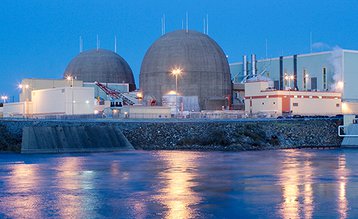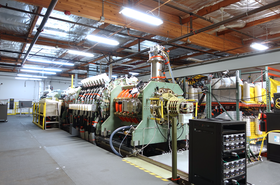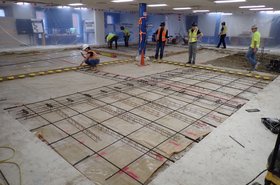A report from the US Department of Energy (DOE) has found that more than 190 coal and ex-nuclear sites could be powered up for new nuclear energy.
In total, the DOE suggests that these locations could host up to 269GW of new nuclear capacity.
First reported by Utility Dive, The Evaluation of Nuclear Power Plant and Coal Power Plant Sites for New Nuclear Capacity report identified 145 coal sites that could be capable of hosting 128GW to 174GW of nuclear energy, while operating or recently retired nuclear power plants could support up to 95GW of additional electric power production.
In total, the DOE estimates that there is a potential for 269GW of 600-MWe reactors.
In conducting the research, the DOE looked at site footprint and acreage, utility availability for the sites, proximity to populations, and potential risk factors to facilities such as flooding or earthquakes.
Of the coal sites found to be suitable, 27 are recently retired and the DOE suggests they could be repowered with 45 advanced reactors.
33 operational-but-due-to-retire by 2040 sites were identified, as well as 85 sites with no current retirement date set. The former could house 72 advanced reactors, while the latter could have up to 173.
The nuclear sites studied by the DOE included 20 potentially suitable locations that had previously canceled plans for expanding capacity or had sought licensing for new reactors.
The department estimates that those could host 31 larger light-water reactors with 37.9GWe of capacity, and 18 out of 20 could host 72 smaller advanced reactors with 43.2GWe.
Of the remaining 34 nuclear sites, 17 could expand with additional larger light water reactors, for a total increase of 21.2 GWe, and 23 sites could host 79 smaller advanced reactors with 47.4GWe of capacity.
The US grid is under increasing strain, with consumption by data centers and other digital infrastructure driving demand for power. Data centers alone are expected to use an annual 35GW of electricity by the end of the decade, according to a report from Newmark released in January.
In May 2024, the DOE announced plans to set up ten "national interest electric transmission corridors" to help expand the national grid in areas with an urgent need for greater grid capacity.
The Lawrence Berkeley National Laboratory (LBNL) plans to release a report on current and near-future data center energy consumption by the end of the year.
In September, the White House launched a 'Task Force on AI Datacenter Infrastructure,' which planned to make it easier for projects to find power and permits as they build out across the US. Among those moves were for the DOE to "continue to share resources on repurposing closed coal sites with data center developers."
The DOE detailed a number of resources and incentives it was offering the data center sector in August. The department plans to meet regularly with data center developers, clean energy solutions providers, grid operators, and other stakeholders "to drive [the] development of innovative solutions."
Several hyperscalers are exploring turning to nuclear power as data center builds continue to expand.
In the last few weeks alone, Microsoft has announced plans to take up 100 percent of a revived nuclear power plant for its AI data centers, AWS was exclusively reported by DCD to be hiring a "principal nuclear engineer" to evaluate SMRs and nuclear fuel roadmaps, Oracle revealed it was planning an SMR-powered gigawatt data center, and Google raised the subject of SMRs during a talk at Carnegie Mellon University.
DCD interviewed the CIO of the Department of Energy in the latest DCD magazine. Read it here







